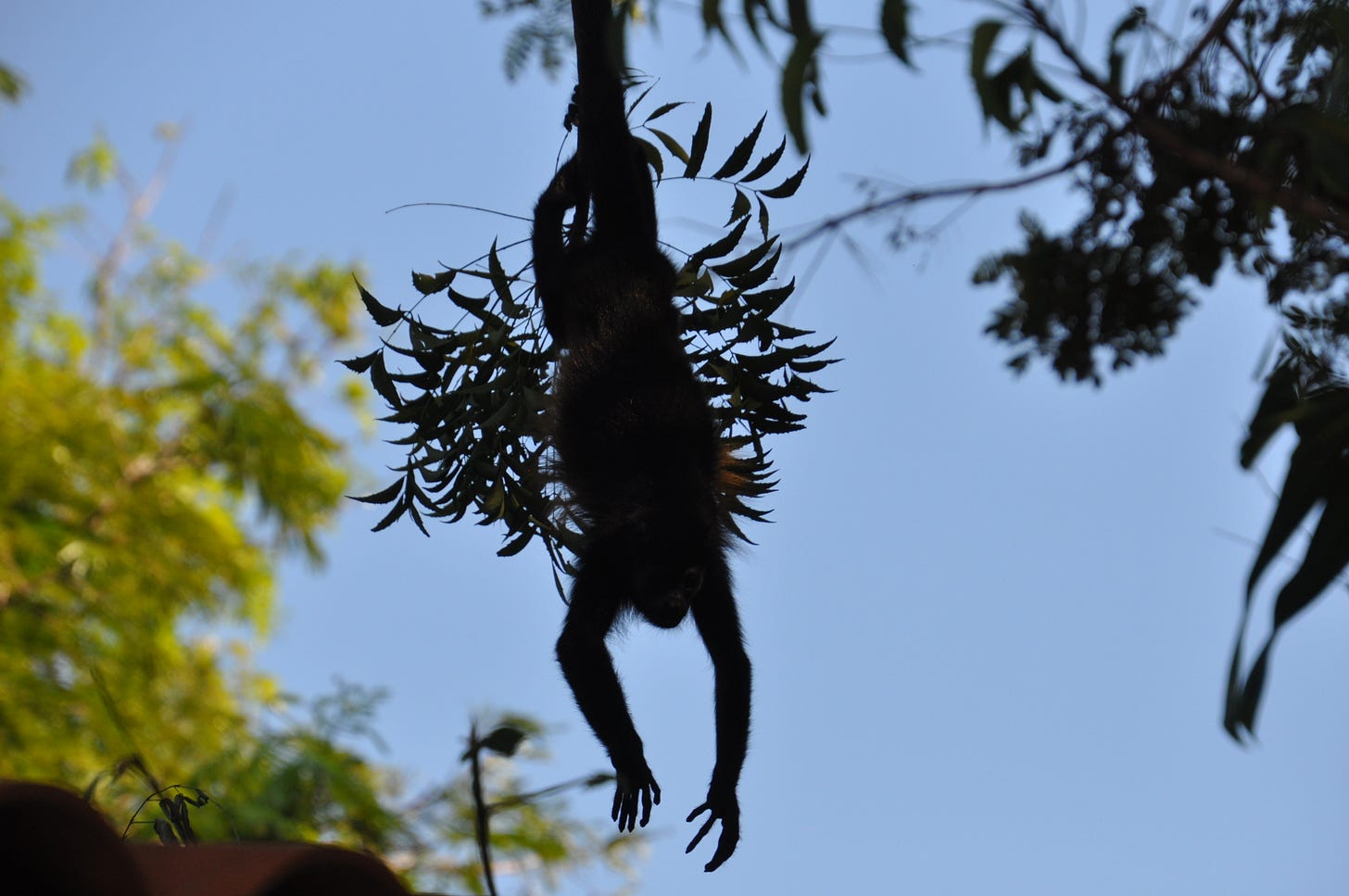Notes From an Environmentalist. An Anthropocene event in Costa Rica.
Our Anthropocene Event
In late 2022 I took a trip to Costa Rica. We spent a wonderful week taking photos of steaming volcanoes, cascading waterfalls, colorful iguana, playful Coatis and malevolent crocodiles.
One day we watched a convoy of army ants break bivouac and march along narrow intersecting trails wreaking havoc on insect larvae and several hapless lizards.
As they marched they flushed adult insects into the air, which were quickly caught and dispatched by several twittering species of ant eating birds.
The birds then defecated attracting clouds of gorgeous butterflies flitting down to devour the scatological delicacies. It turns out that more than three hundred species of animals live in association with these predatory ants.
Such complex interactions between organisms can only evolve in stable environments like jungles, which we are rapidly deforesting, stripping our planet of its life sustaining biodiversity.
One of our party stumbled into the convoy and was painfully bitten while another had a brachiating howler monkey poop on her from overhead -- good stuff for her, “What I did on my winter vacation,” class assignment.
Besides being a glorious place to visit, Costa Rica is where scientists first realized we are experiencing the Anthropocene Event, named because human activity is causing our planet’s 6th major extinction.
But instead of asteroids, volcanoes or ocean acidification the culprit this time is one species, look in the mirror and you will see it, Homo supposedly sapiens. Our impact is so profound; geologists have even considered giving the epoch we are in the Anthropocene but they voted against decision on March 5th.
The push started when a herpetologist with the wonderful name Martha Crump wanted to study the reproductive habits of golden toads endemic to Costa Rica’s Monteverde Cloud Forest Reserve.
She spent two field seasons scouring the reserve that used to writhe with the mating toads only to find a single lonely male.
She contacted her colleague David Wake whose students had noticed the same worldwide decline in amphibians and had identified the culprit as Chrytrid, a fungus spread around the world through the shipment of African clawed frogs used to test American pregnancies and frog legs used to test French palates.
Wake and his colleague V. T. Vredenberg then wrote a paper querying, “Are We in the midst of the 6th Extinction?” described so eloquently by Elizabeth Kolbert in her book of the same name.
A few years later Paul Crutzen who had won the Nobel prize for his work on acid rain was in a meeting where the speaker kept repeating that they were in the Holocene or “wholly recent” epoch.
Finally Crutzen could take it no longer and blurted out, “Lets stop it. We are no longer in the Holocene we are in the Anthropocene.”
The new term had just popped into his head. But it is still on everyone’s minds as we try to mitigate the damage caused by our own invasive species as we march across our planet like those marauding Costa Rican army ants.




